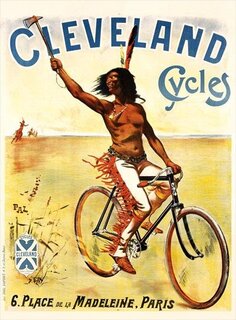
Stereotypical Native American imagery and headdress are still displayed and sold, in 2019, in Hemet, California during the Ramona Pageant. No acknowledgement of Native lands, cultures or contemporary issues are presented during the pageant.
>>
Helen Hunt Jackson wrote "Ramona" as a follow-up to her thoroughly documented account of mistreatments of Native American by the United States government. Her first book was titled "Century of Dishonor" and was given to government officials. Jackson then attempted to write a novel to convey the mistreatments and hardships native communities faced. She used the setting of the Californian mission. But her critique and attempted exposition of the colonial agenda to eliminate Native cultures was upended by white producers who emphasized the picturesque back drop and love story.
It has been reenacted in theaters as plays and films, and Ramona themed tourist centers opened around the southland. In Hemet, California, the setting of the novel, the annual Ramona pageant is still produced but with little to no reference to actual Native cultures or their issues. Fourth graders still reel when the initial cannons are fired at Hemet to start the play, without realizing they are sitting on land forcibly taken from Native Americans by their own government.




